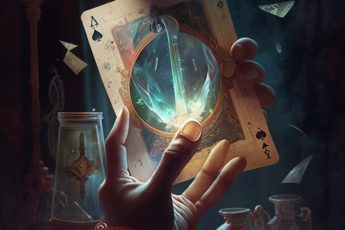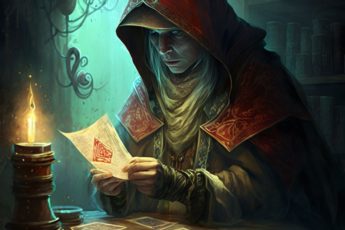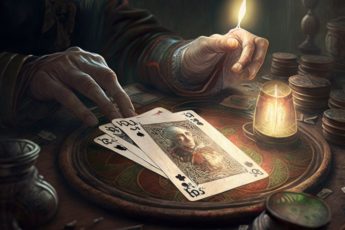Tarot cards have been used for centuries as a tool for divination, self-discovery, and spiritual guidance. The tarot deck is made up of 78 cards, each with its own unique symbolism and meaning. Among these cards, one stands out as being particularly significant: the number 1 card in tarot.
The History of Tarot Cards
Tarot cards have been around for centuries, with the first recorded use of tarot decks dating back to the 15th century. Originally, tarot cards were used for playing card games, much like the standard deck of playing cards that we use today. However, over time, tarot cards began to be used for spiritual and divinatory purposes.
The tarot deck consists of 78 cards, divided into two sections: the Major Arcana and the Minor Arcana. The Major Arcana cards, also known as the trump cards, represent the major events, experiences, and archetypes of life. The Minor Arcana cards, on the other hand, are divided into four suits and represent the more everyday aspects of life.
The Significance of the Number 1 Card
Each tarot card holds its own unique meaning, but the number 1 card is considered to be particularly significant. The number 1 card in tarot is typically associated with new beginnings, leadership, and taking the initiative. It can also represent creativity, self-expression, and individuality.
The number 1 card in tarot can take on different meanings depending on the specific deck and context of the reading. For example, in the Rider-Waite tarot deck, the number 1 card is known as the Magician, representing the power of manifestation and the ability to bring one’s desires into reality. In the Crowley-Harris Thoth tarot deck, the number 1 card is called the Juggler, symbolizing the ability to adapt and take control of a situation.
Understanding the Tarot Reading Process
Tarot readings can be performed by a professional tarot reader, or they can be self-interpreted. When receiving a tarot reading, the querent (the person seeking the reading) shuffles the deck and selects the cards that will be used in the reading. The tarot reader then interprets the cards based on their positions and relationships to one another, providing insights and guidance to the querent.
Tarot readings can be performed for a variety of purposes, including but not limited to: gaining insight into a current situation, making decisions, exploring one’s subconscious, and connecting with the divine. Tarot readings are not meant to predict the future, but rather to provide guidance and insight based on the present moment.
The Interpretation of the Number 1 Card in Tarot Readings
The number 1 card in tarot can hold different meanings depending on the specific deck and context of the reading. In a general sense, the number 1 card represents new beginnings, leadership, and the power of manifestation.
When the number 1 card appears in a tarot reading, it may indicate that the querent is ready to take the initiative and start a new project or venture. It may also suggest that the querent is a natural leader and should take the reins in their current situation. Additionally, the number 1 card can symbolize the need to tap into one’s creative energy and express oneself.
Other Meanings of the Number 1 Card in Tarot
While the number 1 card is typically associated with new beginnings, leadership, and manifestation, it can also hold other meanings in tarot readings. For example, the number 1 card can represent independence, originality, and the ability to start from scratch. It may indicate a time of growth, progress, and positive change.
In some cases, the number 1 card may also represent egotism, arrogance, or a lack of cooperation. It may suggest that the querent needs to be more humble and open to the opinions and needs of others in order to achieve their goals.
The Relationship between the Number 1 Card and Other Tarot Cards
The interpretation of the number 1 card in tarot readings can be greatly influenced by the relationship between the number 1 card and the other cards in the reading. For example, if the number 1 card appears in a reading alongside cards that represent obstacles or challenges, it may indicate that the querent will need to use their leadership skills and determination to overcome these obstacles.
Conversely, if the number 1 card appears in a reading with cards that represent positive outcomes or growth, it may suggest that the querent will be able to easily manifest their goals and bring their plans to fruition.
Conclusion
The number 1 card in tarot is a significant card that represents new beginnings, leadership, and the power of manifestation. Its meaning can vary depending on the specific deck and context of the reading, but its interpretation is often influenced by the relationship between the number 1 card and the other cards in the reading.
Tarot readings can provide guidance and insight into one’s current situation, and can help the querent tap into their own intuition and creativity. By understanding the significance of the number 1 card in tarot, individuals can gain a deeper understanding of their own lives and experiences.






